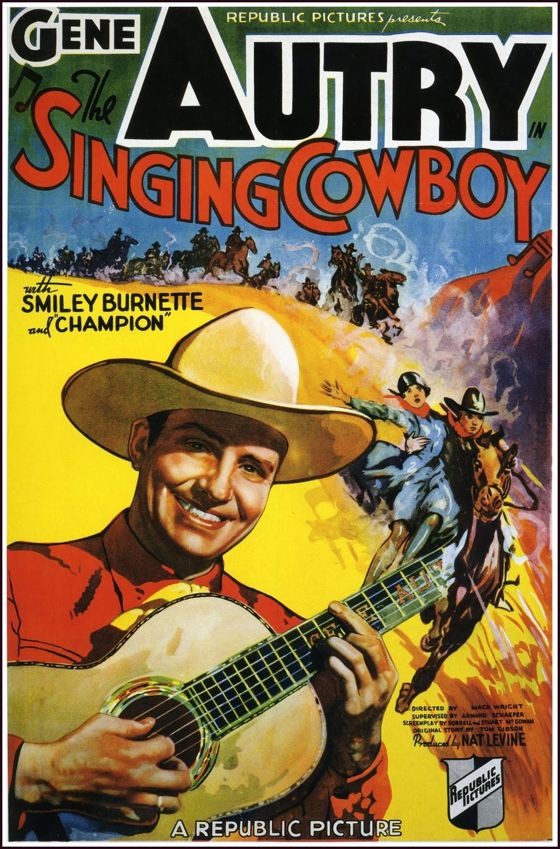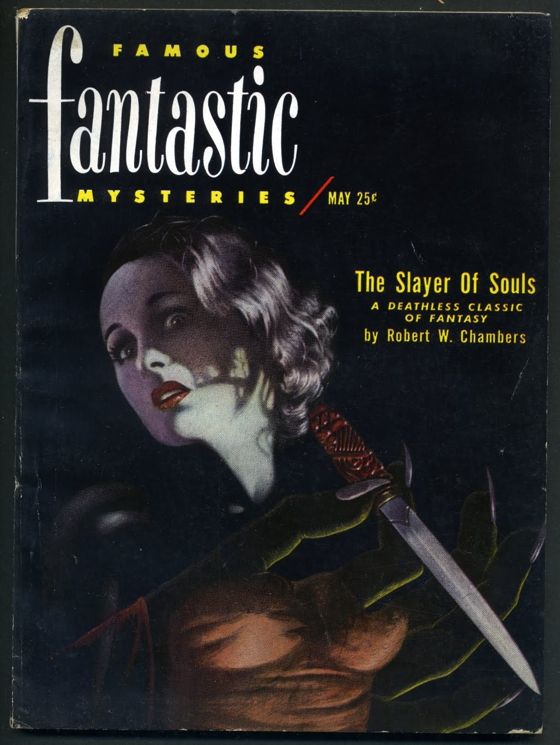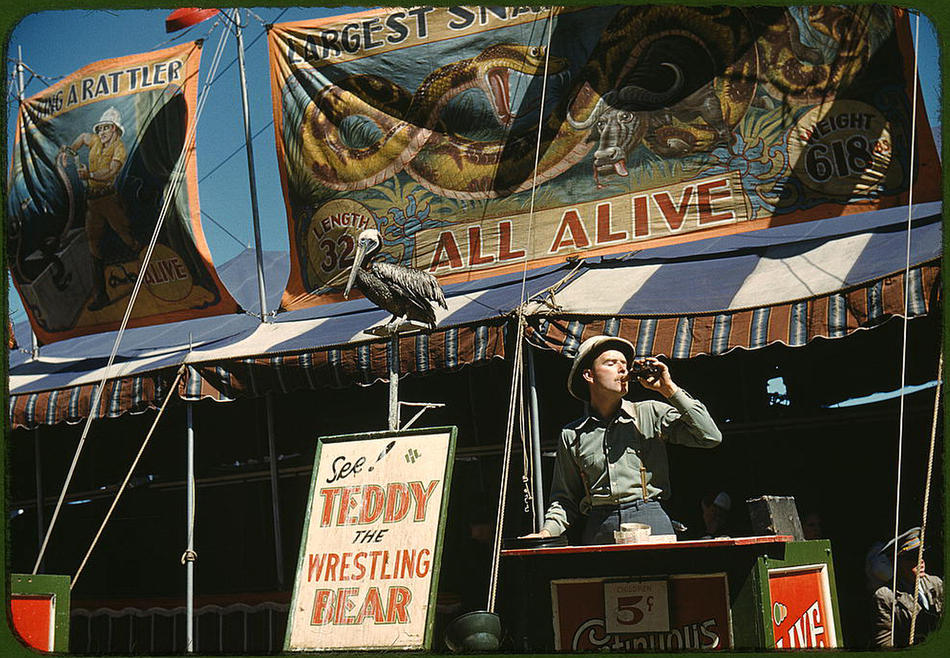Monthly Archives: August 2010
FROM THE ARCHIVES: REPORT FROM THE BEACH, 5 APRIL 1999

The advent of these bright, mild days of April means only one thing to
the Ventura resident whose soul burns for adventure — the
rollerblading season has begun.
The view from the back of a horse is one of antique magnificence, in
which honorable deeds seem inevitable and glory within mortal grasp.
The view from rollerblades is not quite so lofty, of course — but
still, how one towers over the ungainly tread of the joggers, with
their slightly embarrassed smiles distorted by anguish and despair.
On rollerblades your feet are winged, your spirit flies out ahead of you, and it's all you can do to keep up.
For the full report, go here:
FROM THE ARCHIVES: REPORT FROM THE BEACH, 5 APRIL 1999

The advent of these bright, mild days of April means only one thing to
the Ventura resident whose soul burns for adventure — the
rollerblading season has begun.
There is nothing quite like strapping on the blades and gliding out of
the carport onto the smooth gutter that runs down the middle of
Weymouth Lane, turning left on Pierpont and navigating its bikepath to
the end of the avenue, where it runs into the entrance of the San
Buenaventura State Beach.
A wide bike path there, divided by a row of tall palms, runs behind the
dunes, which offer only brief glimpses of the ocean to the rolling
traveler — but already the waves sound clearer and the wind comes off
the ocean unmitigated by the houses of the lanes.
Up past the lifeguard headquarters the dunes fall away and you are
travelling in view of the surf, across a wide flat expanse of beach,
staked out with volleyball net posts, unstrung as yet.
Then under the Ventura Pier and along the beachfront esplanade, as far,
if you want, as Surfer’s Point, the legendary surfing spot that starts
at the end of California Street, or just “C” Street, as the surfers
used to call it.
It’s pleasant to pause for a while then, take off the blades and climb
the stairs to the pier, for a little refreshment at Eric Ericsson’s
restaurant on the pier.
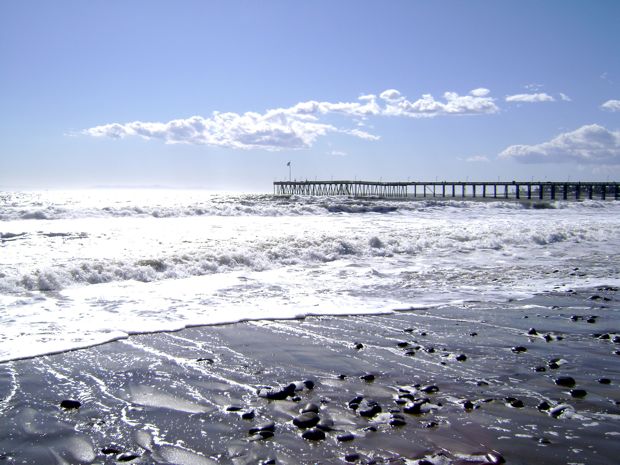
You can sit at one of the tables out front, braving the chill that
still comes in on the wind at this time of year, and have an iced latte
and a plate of fresh, steamed Santa Barbara mussels, prepared with an
astonishing amount of garlic, and chopped tomatoes and basil.
Behind the pier you can see the cars whizzing along the 101, and on the
ridge behind that an Amtrak train will likely roll by. In front of you
is the reliable incantation of the waves, the sun hitting hard on the
deep terraces of sets at the point. Beyond these, depending on the
light and the mist, is the shocking closeness, or mysterious distance,
or utter invisibility of the Channel Islands.
All this whets the appetite, not just for the mussels, which turn out to be delicious, but also for the dreamlike gliding home.
The view from the back of a horse is one of antique magnificence, in
which honorable deeds seem inevitable and glory within mortal grasp.
The view from rollerblades is not quite so lofty, of course — but
still, how one towers over the ungainly tread of the joggers, with
their slightly embarrassed smiles distorted by anguish and despair.
You realize the truth of the maxim that all exercise which feels like
exercise diminishes the soul to the exact degree that it improves the
body.
On rollerblades your feet are winged, your spirit flies out ahead of you, and it’s all you can do to keep up.
A PULP COVER FOR TODAY
AN N. C. WYETH FOR TODAY
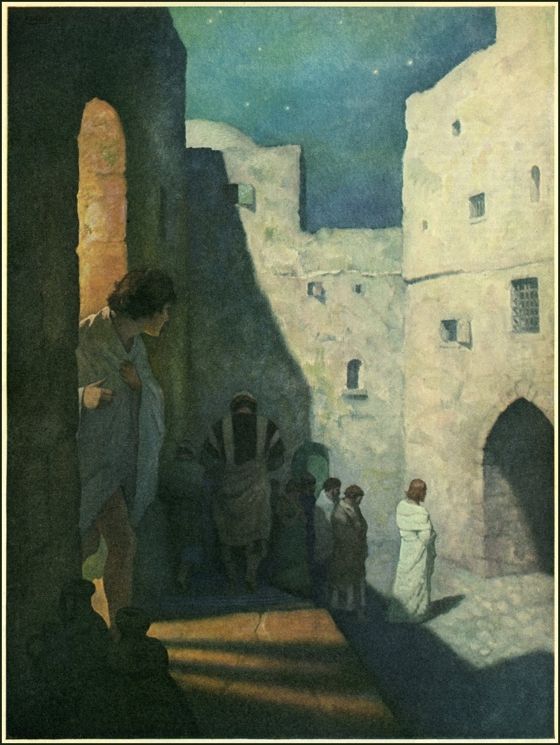
This is one of Wyeth's illustrations for Children Of the Bible. The tale it illustrates is curious. In Mark's account of the incident at Gethsemane, where Rabbi Jeshua was arrested by the Roman soldiers, there's a little aside about “a young man” dressed only in a sheet. When the soldiers tried to seize him they tore the sheet off and the young man fled naked into the night.
This is such an odd detail, and so scandalous, since nakedness was a real scandal in the culture of that time and place, that many scholars cite it as an example of something that must have been reliably reported from the earliest times and widely known, since no later chronicler would have included it otherwise.
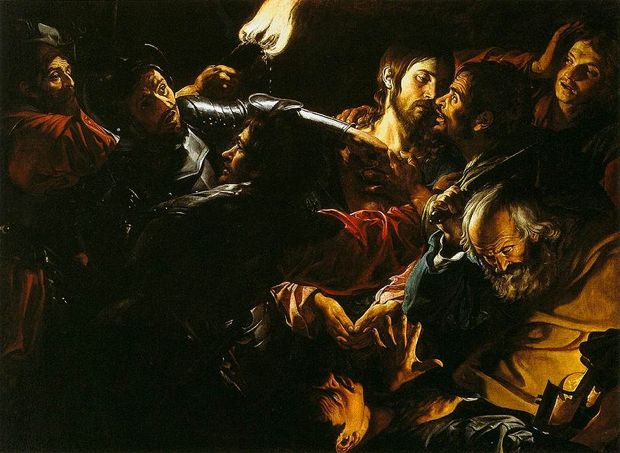
According to Mark it was a cold night — so what was a kid doing out there dressed only in a sheet? No one knows, of course, but scholars have speculated that the young man (often identified as Mark himself) was sleeping in the house where the last supper was held, and seeing the rabbi and his disciples head off to Gethsemane, decided on an impulse to follow them.
That moment of impulse is clearly what Wyeth is depicting — in a dramatic tableau where the rabbi, touched by moonlight, walks off into darkness.
[With thanks to PZ for illuminating the incident, and to Golden Age Comic Book Stories for the Wyeth illustration. The painting above, by Gérard Douffet, from around 1620, clearly owes a lot to Caravaggio's masterpiece The Taking Of Christ, painted about 20 years earlier and a far greater work.]
COMMIE JESUS

If you’re not familiar with it yet, check out the amazing graphic art of Dima Drjuchin — in which many wondrous traditions somehow converge into something new. Mexican lotoría cards and lucha libre ads and Día de Los Muertos imagery get mixed up with Catholic devotional art and 60s psychedelic concert posters and comic book panels, all inflected with a truly eccentric imagination defying category.
It’s cool.
See more of Dima’s art here:
Dima Drjuchin
PZ'S PODCAST

If you're one of those who like their spiritual meditations seasoned with the wisdom of popular culture — Hammer horror films, Thornton Wilder, The Twilight Zone, Jack Kerouac, The Ventures, movies about giant crabs — PZ's Podcast was made for you. Chatty, eloquent, nutty, and surprisingly emotional at times, this series of talks will entertain you for sure, enlighten you most probably and maybe move you to tears at times.
PZ is of course mardecortesbaja contributor Paul Zahl, The Preacher From the Black Lagoon — now unleashed and fully prepared to infect your computer with viral love (against which all known anti-virus software is utterly powerless.) Nothing can stop him now!
Check out the podcasts here — each one fiendishly timed to coincide with the length of the average commute to or from work:
PZ's Podcast
THE DEPARTURE OF THE WITCHES
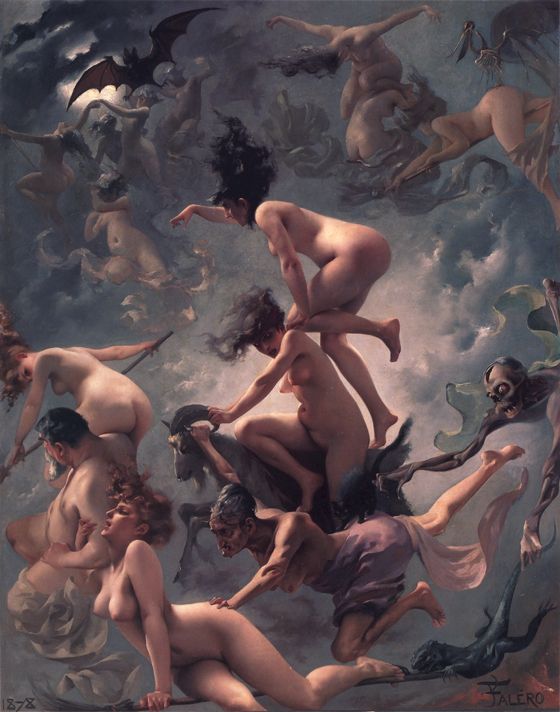
Wait — come back!
At first glance, this looks like a painting by Bourguereau gone stark raving mad, or something Frank Frazetta might have done if he'd been a Victorian academic painter. In fact, it's a work from 1878 by Luis Ricardo Falero. Falero did a lot of supernatural-themed paintings with voluptuous nudes, but from what I've seen, this is his masterpiece.
The depth of the image, and the smarmy but delightful eroticism of the scene, are wonderful.
[With thanks to Boing Boing.]
THE AGE OF ANXIETY
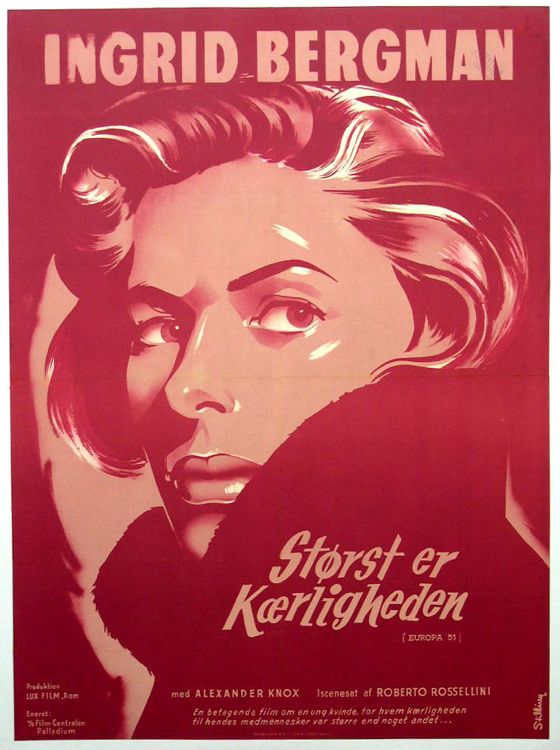
Paul Zahl takes a look here at two films instinct with what might be called “atomic-era anxiety”. In America, this anxiety produced the classic films noirs, the neurotic suburbias of Sirk and Ray, the mystical flight of the Beats and countless low-budget sci-fi visions of impending apocalypse. Italy and Japan, losers in the war that the atom bomb ended, seem to have confronted the post-war angst more directly. [As Paul notes, one of the films he reports on, Rossellini's Europa '51, will be showing on TCM this Friday — you have been alerted!] Paul's thoughts on the two films:
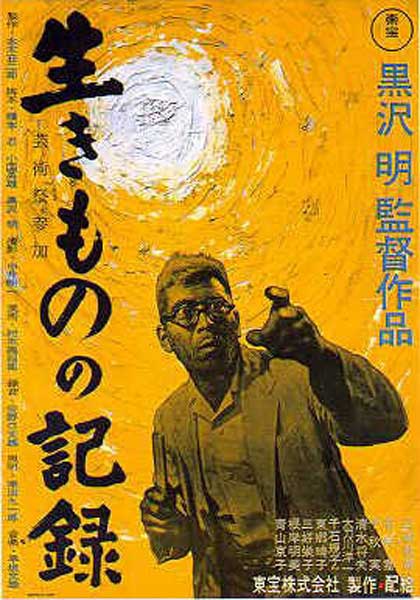
TWO FUGITIVES ON THEIR WAY TO THE SAME PLACE
It's always fun to discover something new. In a world I got to know once, the world of academic theology in Europe, you could make your doctoral dissertation in basically one of two ways. Either you could find a new source, some text that nobody knew about
before; or you could mark a new approach (Ansatz) to familiar material.
I was surprised the other night to see, or seem to see, a new approach
to some familiar material. My wife Mary and I were watching the 1955 film by Akira Kurosawa entitled I
Live in Fear, about a Japanese businessman seized by an obsessive fear
of the atom bomb. The man becomes unhinged, insane, you might say; and
his actions make sure he is committed to a psychiatric hospital. The
question of the movie, however, voiced both by a family court mediator
and an attending physician, is whether the hero, hospitalized and
finally very sick, is the insane one; or whether the world around him,
the citizens of which are going about their business, is insane.
Kurosawa leaves it for you to decide.
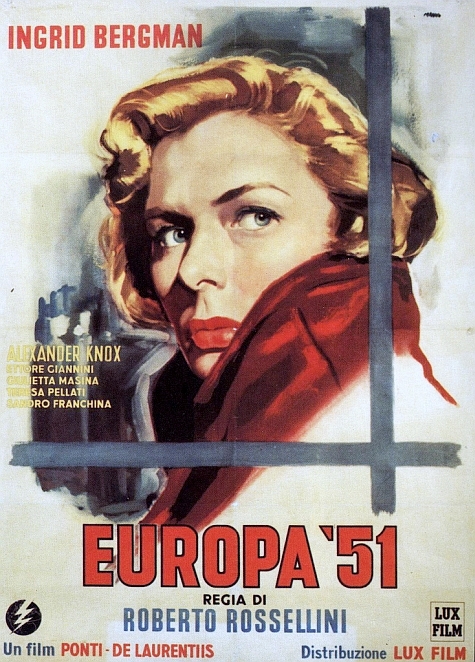
That made me remember Roberto Rossellini's wonderful film with Ingrid
Bergman entitled Europa '51. In this one, made four years before I
Live in Fear, a young mother of means, living in Rome, suffers a
personal catastrophe that unhinges her completely. Initially, she goes
to work, as part of her recovery, on the shop floor of a great factory.
She tries Communism, you might say, in the aftermath of Fascism's
collapse. The well-intended experiment fails. As the implications of
her loss grow clearer and louder, the Bergman character becomes more
and more withdrawn. Finally, after a brief stay in a psychiatric
hospital, where she finds herself identifying, through surges of
empathy, with the inmates, she begins to get better. But, as Rossellini
spins his tale, she decides to make a firm decision to stay in place.
She decides not to return to the world. The final close-up of Bergman,
gazing out from her hospital cell, portrays her as a saint.
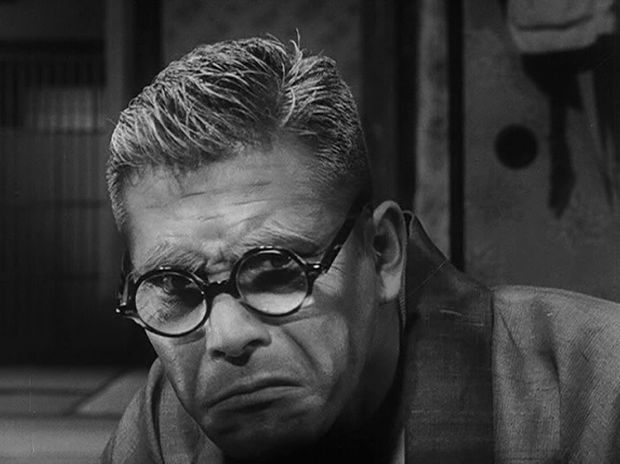
As I compared these two films in my mind — they are of roughly the
same date and both come from environments of defeat, which you could
spell with capital letters — they came together. They both point to
heroic “prophets” who renounce and repudiate the values of the world.
Their renunciation is dramatic. In Nakajima's case, the hero of I
Live in Fear (played by Toshiro Mifune [above] in effective old-age makeup),
an act of industrial sabotage becomes the desired route.
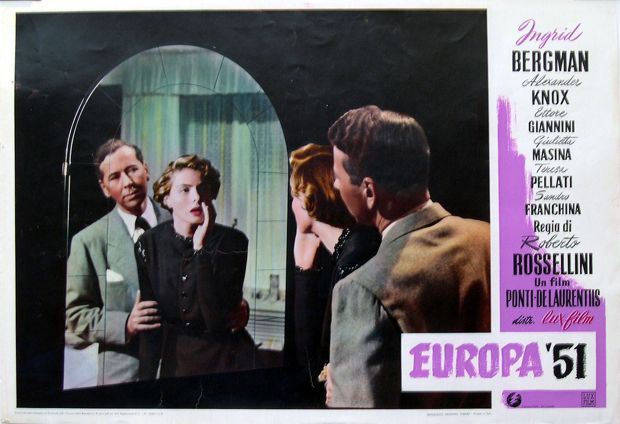
In the
Bergman character's case, it is her conscientious refusal to be
discharged from the hospital, a protest that she is able to carry off
insofar as her husband, played by the English actor Alexander Knox,
finally loses patience with her. In both cases, the renunciation of
the world is dramatic.
Europa '51 is scheduled to be shown on TCM this Friday afternoon,
August 6th, at 6 o'clock EST. I caught it early one Friday morning in
2006, taped it, then gave away the tape to a student, who kept it.
Damn! Needless to say, one is living for the sixth of August. I
believe you will like this movie.
Then go out and Netflix I Live in Fear, in its new Criterion
(Eclipse) edition. I think you will be amazed at the parallel. Oh,
and listen to the score of Fear, which is only heard during the
opening and closing credits. It's Godzilla-ish, with a theremin
front and center — if that's the right expression for a theremin —
and just breathes the . . . Atomic Age.

Endlich can I add a post-it to this post?
There's a line in T. S. Eliot's play The Family Reunion which sums up
these two movies, works of art, I think, just right. It goes like this:
In a world of fugitives, those going in the opposite direction appear to be running away.
A CLOWN FOR TODAY
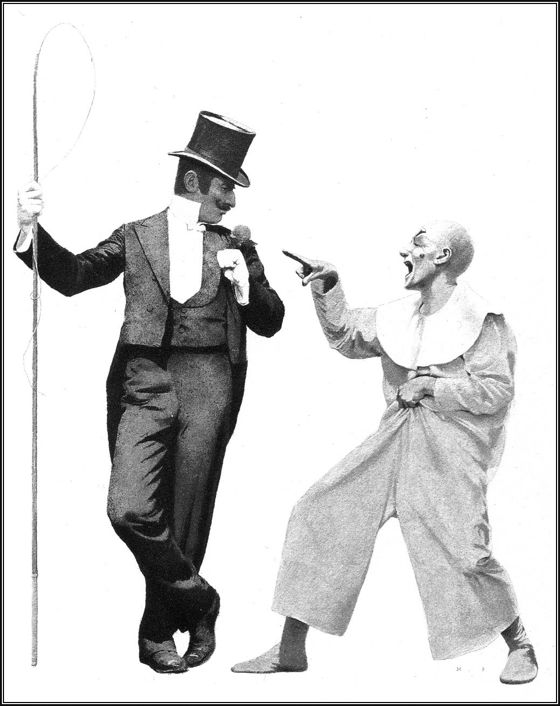
Illustration by Maxfield Parrish for Kenneth Grahame’s Dream Days.
HAMLET (1948)
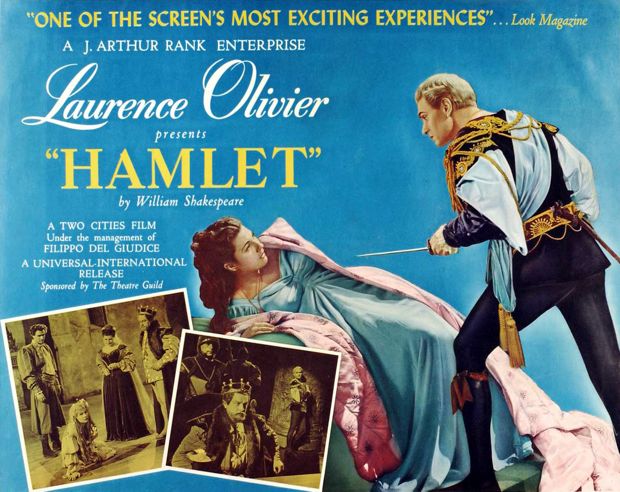
When we were 15, my friend Paul Zahl and I decided that Laurence Olivier's film of Hamlet was “over-directed” — whatever that means. Nearly a half century later, and having just watched it again on DVD, I am ready to pronounce a different verdict — it's badly directed, plain and simple, in most respects.
The black-and-white cinematography, with its endless swooping through miniatures, its moody superimpositions and backscreens, shows only the rarest trace of compositional skill, of plastic invention. All the performances are terrific, except Olivier's. His wimpy, fey Hamlet allows for no tension in the character. Shakespeare's Hamlet loses his manhood in the course of the play, but Olivier's Hamlet has abandoned his before the movie starts. Perhaps this is a function of Olivier trying to play younger than he is, but his boyish haircut and simpering manner simply read as weakness. If Hamlet is weak, if he's not a strong, smart, passionate man, where's the story — what does he stand to lose?
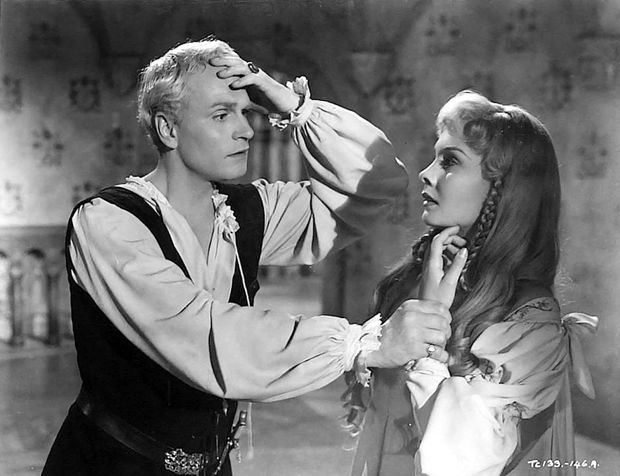
Finally, Olivier's decision to speak the great soliloquies of the play mostly in voice-over is a disastrous miscalculation. Hamlet is in part about “performing” the self — the self as performance. Shakespeare's soliloquies for Hamlet are not about letting us in on his character's deepest, truest thoughts — they're meant to show us a man trying to construct a self that he can find plausible as a basis for irreversible actions . . . and failing.
The convention of soliloquies spoken aloud to an audience is artificial, but in this play Shakespeare used the convention to make a comment about the artifice of thought, the artifice of self-reflection. In a film as self-consciously expressionistic as Olivier's Hamlet, what sense does it make to substitute the movie convention of voice-over for the stage convention of soliloquies when it sends such a different message?
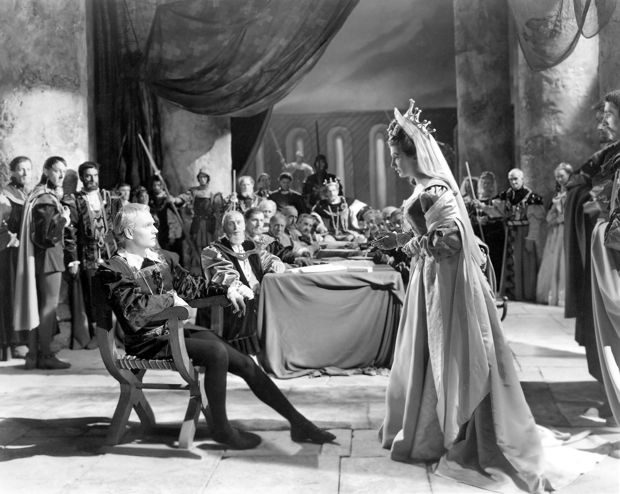
Having said all that, I can't deny that Olivier's film is wonderfully entertaining, because Shakespeare's language is wonderfully entertaining, and no interpretation of Shakespeare's story and characters can ever trump the playwright's ruthless determination not to interpret them. As long as his characters speak their lines intelligibly, they are alive, immortal.
This film records the extreme skill British players of the last century developed for speaking Shakespeare's language naturally, without losing its poetry, its formal eloquence. It's absurd to declaim Shakespeare like holy writ, but equally absurd to toss it off like casual conversation. Nobody in the history of the world has ever spoken casually in strict iambic pentameter and rhyme. There is a middle way, and Olivier's cast members have mastered it.
Olivier has mastered it, too, of course, and if you listen to recordings of his readings of the lines in this film, they dazzle with their subtlety and modulation and invention. They don't contribute to a convincing portrayal of Hamlet in the film itself, but they are the product of extraordinary craft and art.
PAPER MOON
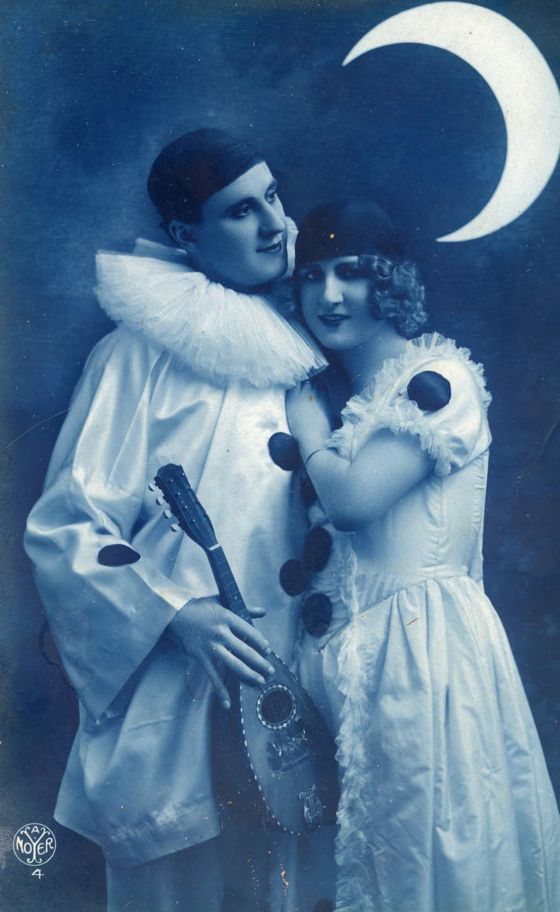
With thanks to Amy Crehore at Little Hokum Rag . . .

